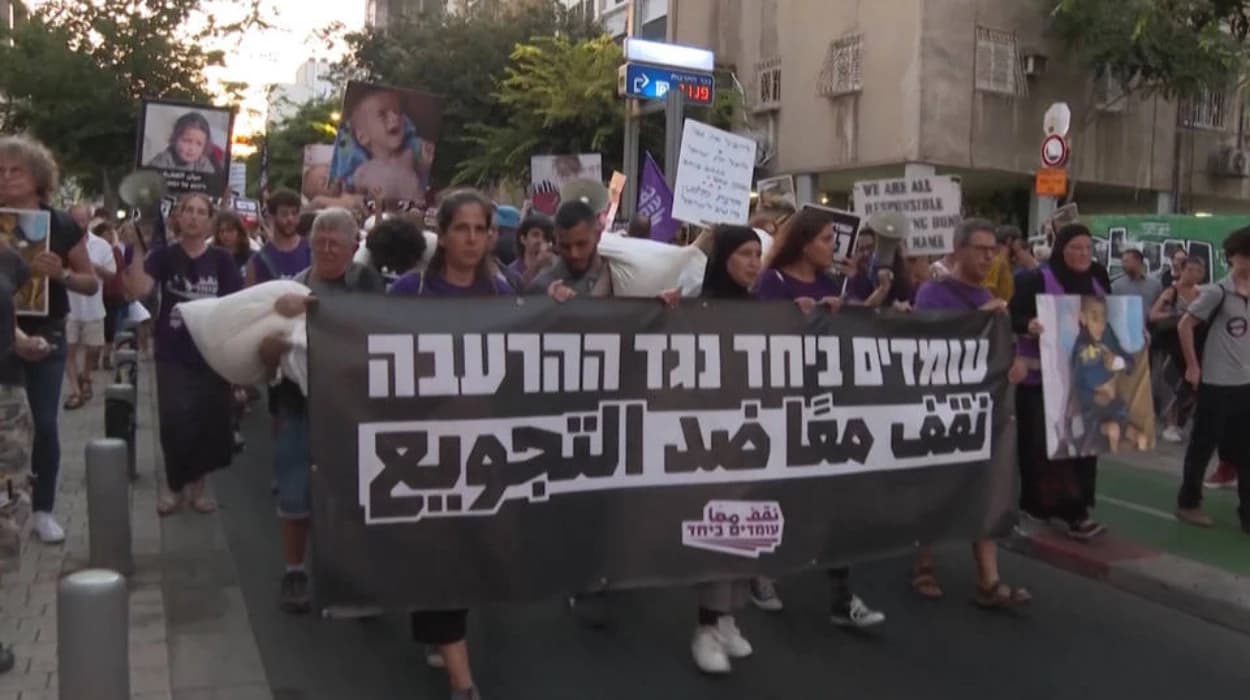Thousands of antiwar protesters marched in Tel Aviv, voicing
strong opposition to ongoing conflicts and calling for peace. The demonstration
highlighted widespread public dissent and raised questions about Israel's
current military and political strategies.
What Sparked the Massive Antiwar Protest in Tel Aviv?
As reported by multiple correspondents across international
media, on Wednesday, July 23, 2025, thousands gathered in Tel Aviv to
demonstrate against ongoing military actions involving Israel. The protesters
called for immediate cessation of hostilities, demanding political leadership
prioritise peace and diplomatic solutions over armed conflict.
This peaceful but resolute march was one of the largest
antiwar assemblies in recent years, signalling deep public unease with
continuing violence and its humanitarian consequences.
Key Participants and Organisers
According to reports by local journalists and independent
observers, the protest included a broad cross-section of Israeli society — from
peace activists and students to veterans and families affected by the conflict.
Several grassroots organisations and peace advocacy groups coordinated the
event, aiming to raise awareness about the costs of war and push for government
accountability.
Notably, no major political party officially endorsed the protest,
underscoring its grassroots character. However, some prominent peace
campaigners were visible leaders during the march.
What Messages Did Protesters Convey?
Witnesses and reporters convey that placards, chants, and
speeches during the march strongly condemned the current military strategies
and the cyclical nature of violence in the region. Slogans demanded respect for
human rights, an end to occupation, and increased efforts for dialogue and
reconciliation.
One speaker quoted by various media outlets urged,
“We want peace, not perpetual war. Our children deserve a future without fear.”
Authorities Response to the Demonstration
Law enforcement agencies maintained a visible but
non-confrontational presence during the protest. According to police statements
reported by journalists on the ground, the demonstration was largely
law-abiding with no significant incidents reported. Authorities confirmed that
the right to peaceful assembly was respected, though they remain vigilant in
the wider context of security concerns.
What Is the Wider Context of This Protest?
Political analysts cited in news coverage place the Tel Aviv
march within the broader context of ongoing regional tensions and intermittent
escalations between Israel and neighbouring groups. The antiwar demonstration
reflects growing public fatigue over conflict, economic strain, and the
humanitarian toll on both sides.
Experts posit that the protest could signal changing public
attitudes within Israel, potentially influencing future political debates on
security and foreign policy.
How Is the International Community Reacting?
While specific international reactions to the Tel Aviv
protest are yet to be fully documented, the demonstration comes amid global
calls for peaceful resolution to the Israeli-Palestinian conflict and wider
Middle Eastern instability. Human rights organisations have welcomed the
expression of dissent, urging all parties to heed popular demands for peace.
What Are the Implications for Israel’s Political Landscape?
Political commentators suggest that the scale and sentiment
of the protest might embolden peace-focused politicians and civil society
actors. Conversely, hardline elements may perceive the protest as undermining
national security imperatives, potentially deepening political divides.
This mobilisation exemplifies the complex dynamics in
Israel, balancing security concerns with democratic freedoms, and highlights
the challenges leaders face in responding to public opinion.
Peace Movement in Israel
Peace advocates who organised the march plan further public
engagement campaigns, aiming to sustain momentum and bring war opposition into
mainstream political discourse. The demonstrators emphasise continued
nonviolent action, education, and dialogue as tools to achieve lasting change.
The ongoing situation remains fluid, with subsequent public
reactions and government responses likely shaping the trajectory of both the
conflict and peace efforts.
